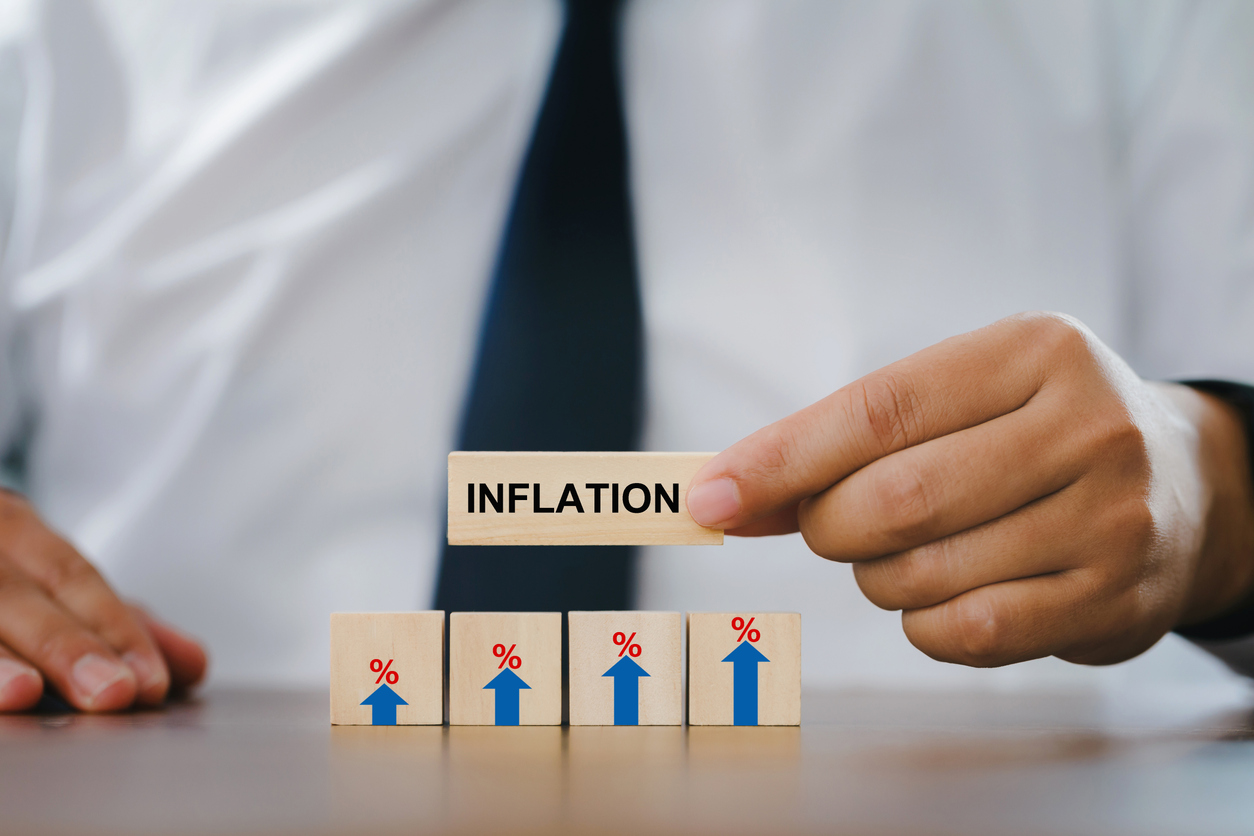
After more than a decade of negligible returns, deposit interest rates have slowly increased over the course of the year. The actions of the Bank of England, in an attempt to slow inflation, have given savers some respite after many years of ultra-low interest rates.
For those seeking to generate an income from their capital, to supplement income from other sources such as pension or property rental, cash has given very little in the way of income since 2008, and investors have turned to other forms of investment, such as equities, to generate better returns. With cash deposits now offering higher rates than at any time over the last decade, some may consider whether cash is a viable option for income generation. However, as we will explain, there are good reasons for investors to stick with assets, such as equities, to provide a consistent income.
The inflation trap
After the measures taken by Governments and Central Banks around the World to help their economies through the Covid-19 pandemic, and the significant inflationary pressure exerted by the war in Ukraine, inflation stands at over 10% in the UK and Eurozone, and 8% in the US. This headline rate somewhat understates the true impact of the cost of living on individuals and households, where essential items such as food and energy have seen much greater price increases than the official rate.
Looking at deposit rates currently available on fixed rate savings bonds, a rate of over 4% can now be obtained for locking cash away for one year. This may, at face value, seem attractive, particularly when compared to savings rates seen over the last decade. However, when the effect of headline inflation is taken into account, this represents a negative real rate of return of -6%. In other words, the spending power of a saver’s capital is still eroding, despite the higher savings rates on offer.
Indeed, the current conditions provide a deeper negative real rate of return for cash deposit than at any time since 2012. Between 2012 and 2021, the headline Consumer Prices Index did not exceed 3%, and therefore even a deposit rate of 0.1% would have only produced a negative real return of -2.9% per annum during this period.
Despite the disappointing real return, cash remains an important element of any sensible diversified investment strategy. However, for investors seeking consistent income levels, with the potential for capital growth in an attempt to offset the eroding effects of inflation, equity income investments remain a viable and attractive option.
Growing an income
Investors in equities derive returns from two sources. Firstly, an investor will hope that the value of the investment will rise over time, as growth in the profits of the company is reflected in the price of the share owned by the investor. Secondly, successful companies make distributions of a company’s earnings to its shareholders in the form of a dividend. The level of dividend paid, divided by the share price, provides the dividend yield figure, which is a useful way of comparing the income generated by equities to the income earned on cash, or any other income generating investment, such as a rental property.
It is important to note that dividends are not guaranteed, and are reliant on the fortunes of the company in which the investor owns shares. Large, stable companies tend to offer a consistent dividend, and would only seek to cut their dividend if the company saw a significant downturn in performance. For this reason, equity income strategies tend to focus on mature large cap stocks, with a track record of consistent dividend payment.
Dividend growth is a key added attraction. Many companies look to grow dividends paid out to investors year on year and there are a small number of global giants, such as Johnson and Johnson and Coca-Cola, who have consistently increased their dividend at each declaration point for many years.
Diversification is key
Within any equity income strategy, it is important to maintain a well diversified portfolio. This is where collective equity income funds can provide investors with an allocation to a large number of individual positions, to spread the risk and also achieve a regular income stream. Equity income funds are generally actively managed, although an increasing number of passive options are now available. Most equity income funds adopt the approach of balancing income generation with capital appreciation over time, and whilst investors can achieve additional growth through reinvested dividends, those seeking an income can arrange for this to be paid out.
Further diversification can be achieved by investing in global equity income funds, in conjunction with UK equity income, as this further spreads the investment across different geographies.
Focus on the longer term
2022 has been a difficult period for investors in almost every asset class, which is in stark contrast to 2021, where most asset classes posted strong returns. Over the longer term, the total return – i.e. income and capital appreciation – generated by equity income funds has a significant lead over the return achieved on cash deposit. For example, since 2016, cash returns have only beaten returns from equities once (2018) and in the other years, equities have outperformed by a wide margin.
Despite the increase in cash savings rates, we feel that equity income remains a viable option for investors seeking an income from their investments. Naturally, risk needs to be considered, and an element of cash savings is an important part of any diversified strategy. This is where expert financial planning can add value, both in respect of helping investors determine the appropriate strategy for their objectives and attitude to risk, and also devising an appropriate portfolio of funds to generate an attractive level of income.
If you are interested in discussing the above further, please speak to one of our experienced advisers here.
The value of investments and the income they produce can fall as well as rise. You may get back less than you invested. Past performance is not a reliable indicator of future performance. Investing in stocks and shares should be regarded as a long term investment and should fit in with your overall attitude to risk and your financial circumstance.





